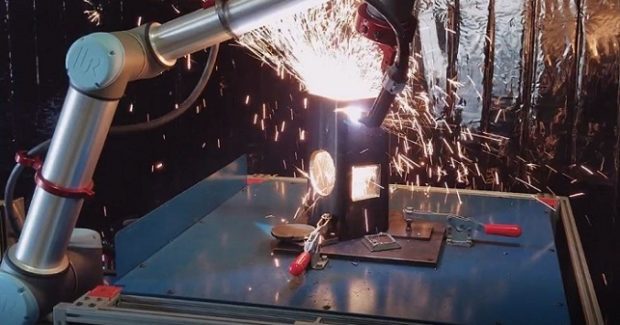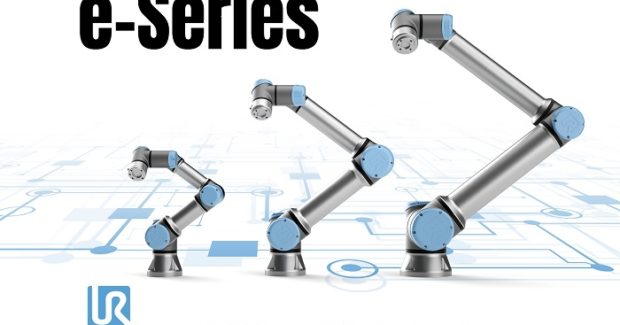Cobot-Assisted Cutting of Shapes Into 3D Structural Steel Components
The SnapCut integrated cutting system from Universal Robots and ARC Specialties uses a UR10 collaborative robot to manipulate a Hypertherm torch for cutting squares, rectangles, circles, C-channels and more through parametric programming.
Posted: October 16, 2018
In Booth C-12116, Universal Robots USA Inc. (UR; Ann Arbor, MI) introduces two unique new offerings for metal fabricators: the SnapCut cobot cutting system and a new e-Series product line. A traffic stopper at last year’s show was SnapWeld, the first integrated welding system for collaborative robots that was developed by UR+ partner ARC Specialties, Inc. (Houston, TX), which now launches a new cobot-assisted system: SnapCut allows non-welders and non-robot operators to easily cut shapes into three-dimensional structural steel components by utilizing a UR10 collaborative robot to manipulate a Hypertherm cutting torch to desired positions around the cutting path. Included in the SnapCut software are standard shapes like squares, rectangles, circles, or C-channels that can be selected for parametric programming. The operator simply moves the cutting torch to a few locations on the cutting surface, hits run and watches the sparks fly. A non-standard shape can be programmed by the operator, who inserts SnapCut instructions for cutting control or has ARC Specialties add the shape to the parametric programming interface.
Also on display are the new e-Series cobots from UR that have a built-in, tool-centric force/torque sensor to take on applications requiring force control right out of the box, such as sanding, buffing, polishing and deburring where force-feedback is paramount in order to obtain uniform results. Additionally, the sensor can be used to measure mass and perform inspection processes or precisely detect contact. A repeatability of down to 30 microns means these cobots are suitable for very precise finishing, assembly and electronics tasks. A re-designed intuitive and responsive-touch user interface reduces programming to a few clicks. Advanced users can utilize the new externally accessible, 500Hz system bus to implement more complex motion control algorithms such as advanced machine vision applications.
The user interface also includes programming stopping time and stopping distance for protective stops. This unique feature, not found on any other collaborative robot, greatly reduces the complexity and uncertainty involved in performing pre-deployment risk assessments. All 17 safety functions are in compliance with the latest ISO machinery safety standards for unobstructed human-robot collaboration. The “e” in e-Series stands for “Evolution” and underpins a UR key vision of “Empowering People” and making it “Easy for Everyone.” “End-users with complex applications and diverse or uncertain future needs will benefit from the e-Series platform and our unique UR+ ecosystem, knowing that their investment will be able to grow with them as their needs change,” said Stuart Shepherd, the regional sales director of Universal Robots Americas, referencing the rapidly expanding portfolio of certified UR+ plug-and-play end effectors, software and peripherals certified for UR cobots that are now available. “The global cobot market is the fastest growing segment of industrial automation. The e-Series will continue to propel this class of robots forward into new applications in small machine shops and large enterprises alike.”
Universal Robots USA Inc., 5430 Data Court, Suite 300, Ann Arbor, MI 48108-8944, 844-462-6268, www.universal-robots.com.
















